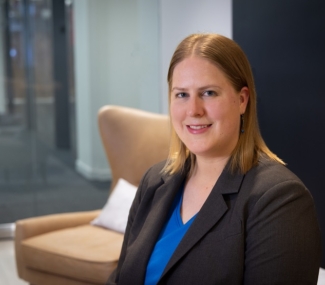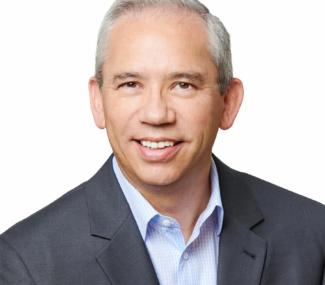Disruptive Forces and Strategic Imperatives Shaping the Future of Higher Education

A tidal wave of transformation is headed for the higher education industry, and only those institutions that can plan for and adapt to systemic change will prosper. Toffler Associates’ recent work with postsecondary institutions and years of gathering signals on societal changes can provide key insights to understand forces of change and evolve to meet them. This expertise can help postsecondary institutions and organizations that hope to hire their graduates to recognize change and minimize disruptions to their business models and missions.
A Legacy of Change, a Future of Disruption
Since the founding of the University of Bologna in 1088, higher education has undergone many evolutions, yet much has remained consistent. Globalization has expanded the scope of learning through the cross-cultural exchange of ideas, emerging technologies have opened countless areas of research, the range of academic degrees has proliferated, and access to education has, overall, increased. However, much of academia is shaped by longstanding traditions. Postsecondary institutions continue to focus on teaching, learning, and research in consolidated physical locations. Professors provide classroom instruction based on examinations and assessments aimed at building credentials toward granting degrees. And many colleges and universities continue to cater their offerings primarily to young people while providing service to society.
The U.S. has seen incredible growth in college graduates since WWII. One driver of change was the Servicemen’s Readjustment Act of 1944, also known as the G.I. Bill, which, among other benefits, gave veterans stipends for tuition and fees at colleges and trade schools. Between 1960 and 2021, the U.S. population of college graduates age 25 and above increased from 7.7% to 37.7%. This represents almost a fivefold increase in six decades.
A Broader Ecosystem Under Threat
Toffler Associates argues that this growth is not indefinitely sustainable and questions whether higher education has hit peak utility in its current structure. Students face many challenges that not all institutions are prepared to address. Rising costs of tuition are leading to greater inequity in public higher education institutions as college becomes less affordable to underserved students. Potential students face employability challenges and student debt. Colleges are increasingly attended by nontraditional students with needs related to their caregiving and employment responsibilities. Underscoring all of these changes, students are grappling with a mental health crisis that many colleges seem underequipped to handle.
Into this pressure cooker, alternative educational pathways have emerged. Students can now choose from many options, including short-form certificates and employer-based training. Expanded competition from alternative educational offerings poses an existential threat for traditional degree programs that fail to differentiate and demonstrate clear return on investment.
This list accounts for current, direct issues. However, as we look at the future changes in society and the workforce, Toffler Associates has identified more macro forces from across the educational ecosystem that will create a seismic threat to today’s current higher education institutional structures.
Challenges will have a Range of Disruptions and Impacts
To understand the full breadth of potential disruptions to the higher education market in the future, it’s helpful to take a broad ecosystem view because the catalysts for disruptions can originate from any source.
Higher Education Ecosystem Components
The components of the higher education ecosystem include:
- Supply: The demographics and volume of traditional students, non-traditional students, parents, counselors, and high schools all affect the inputs into academia.
- Competition and Learning Alternatives: A wealth of choices among universities, liberal arts colleges, HBCUs, global brands, platforms, and short-form credentials can funnel potential students away from any individual college.
- Market Influences: Changes in financing, technology, societal beliefs and values, and knowledge and skill demands all affect student and parent views of the value of higher education.
- Institutional Changes: The choices of each university’s leadership about experiential learning, the college’s brand, academic offerings, athletics, financial management, and more affect which students the university attracts or repels.
- Employers: The outputs of higher education affect the skills that commercial, government, nonprofit, entrepreneurial, and military employers have among their workforces; these employers, in turn, communicate demand for specific skills set to academia.
Seven Major Disruptors on the Horizon
Based on Toffler Associates’ work with the higher education community, we identify seven major disruptors across this broader ecosystem:
- The importance of return on investment in driving decisions: Students and families are questioning the value proposition of a four-year degree, and institutions must find new revenue streams and rethink antiquated cost structures.
- Highly segmented learning modality preferences: Gen Z digital natives expect a tech-integrated, customizable, and hybrid learning experience that seamlessly blends online and in-person modalities, and institutions must meet that demand to attract them.
- Lifelong learning: The future student body looks much different than the traditional 18-22 year old undergraduate, and engaging mid-career changers, senior citizens, and upskilling employees as lifelong learners through accessible education is key to institutional growth.
- Ubiquitous access to learning: While residential campuses will always retain appeal for many as a rite of passage for traditional students, institutions should also support low-residency, hybrid, and online learning for nontraditional students.
- Alternatives between holistic and long-term education vs. specialized and short-term education: In a world where students needs more educational options, institutions must reconsider their assumptions around general education requirements, enable modular and customized pathways, and incorporate experiential learning into their future plans.
- Scarcity of faculty paired with high demand: Institutions should consider their talent pipelines to faculty and professor positions, note the gaps in demographics and expertise, and consider the risks these gaps pose to their institution’s value proposition.
- Pervasive uncertainty: Change is coming from everywhere in the ecosystem, and understanding its impacts is a vital, ongoing exercise for any institution.
In the point of view of Toffler Associates, amidst these disruptors, more fragmentation will occur in the higher education market that will fragment supply, demand, and offerings for higher education, all of which will shape a new operational landscape.
Higher Education Institutions can Prepare for Disruption
Understanding these forces of disruption presents strong opportunities for institutions that proactively evolve their models to better meet student and societal needs. To prepare for and adapt to dynamic futures requires institutions to take four steps:
- Recognize the degree of potential change that is possible. This will not be the same for every institution, but every institution should know which potential disruptions could be most impactful to them.
- Review the potential disruptions to clearly understand the risks and opportunities that are created from these changes. Doing so can illuminate blind spots and unlock new possibilities to innovate institutional offerings.
- Develop response strategies to define how the institution will differentiate, meet demand, and provide value in the ecosystem of the future. This involves considering the institution’s brand, proposed value, and core messaging.
- Create a roadmap and implementation plan to prioritize and determine how and when the responses will be implemented. Tracing a path from an ideal future state to today will help institutions prioritize their immediate next steps.
Navigating the Coming Storm
Toffler Associates, founded by the futurist Alvin Toffler, has been helping organizations identify, prepare for, and respond to disruptions for more than 25 years. Using our Alternate Futures® Scenario Planning methodology, organizations envision and explore potential futures to bring clarity to the risks and opportunities they may face.
By framing the right questions, conducting an environmental scan, identifying drivers of change, developing future worlds, and exploring implications and imperatives, Toffler Associates can help your institution identify the strategies and tactics necessary to succeed in the midst of systemic change.


 About the Authors
About the Authors
